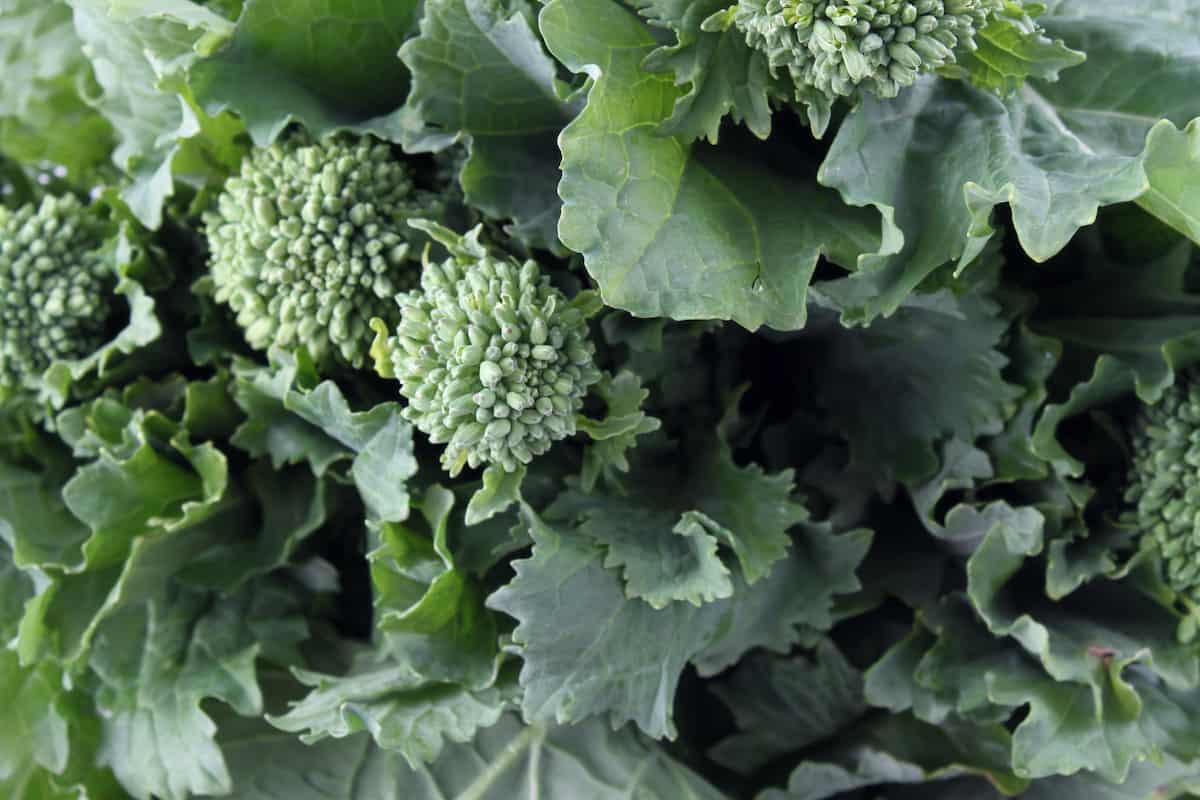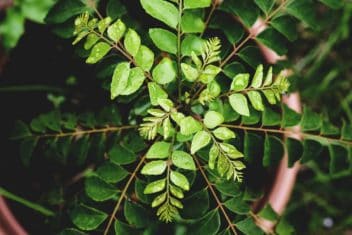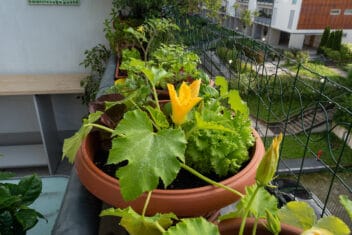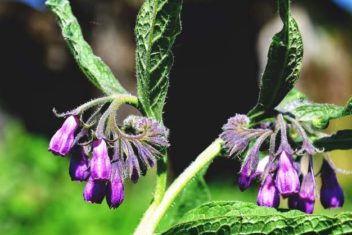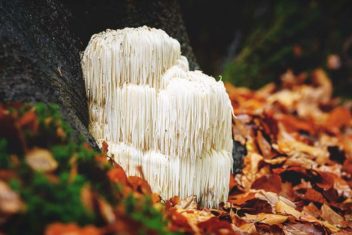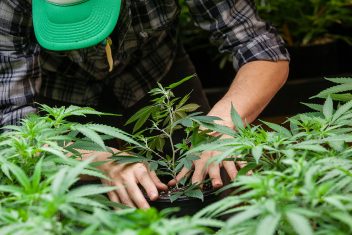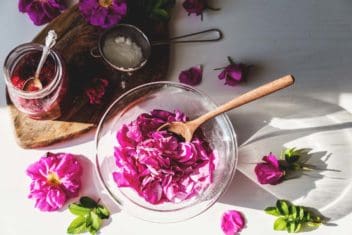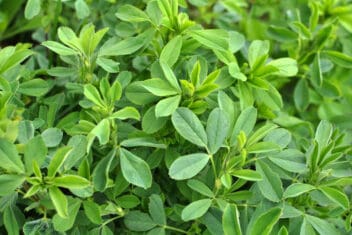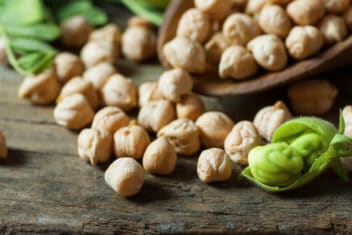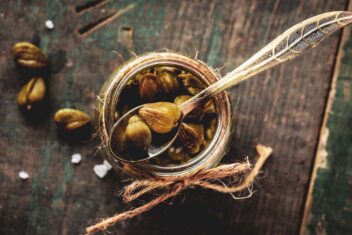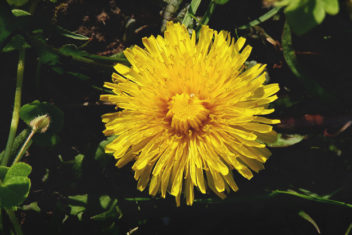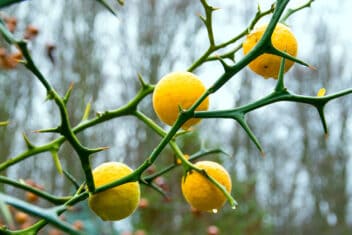Rapini, also called broccoli raab or rabe, is a close relative of turnips. However, when some varieties are ready to harvest, they form small flower heads that resemble little broccoli clusters.
This plant likely developed for use as a medicinal herb in China. However, new, larger heading, milder tasting varieties were cultivated as a vegetable in Italy. There it is nearly as beloved as winter radicchio and other bitter greens.
In the US, rapini has been gaining popularity in home gardens and at farmers’ markets over the past 15 years. Today it’s a staple gourmet green at fine dining and farm to table restaurants and with gardeners looking for a continuous supply of tasty, nutritious greens.
Rapini has that bitter sweetness that people associate with turnips and mustard greens with just a hint of the sweetness typical of broccoli. That flavor complex is not for everyone.
But if you fall into the bitter loving vegetable crowd, then rapini is a must for your garden. Also, it does sweeten up with cooking and pairs well with a splash of maple syrup or crunchy Asian pear slivers.
Rapini Varieties
If you think rapini might be right for your sophisticated, complex taste buds, here are some popular, easy-to-find varieties to consider growing at home.
1. Quarantina
Quarantina is a tender, fast-growing rapini that is great for containers or square foot gardens as it can tolerate closer spacing. This variety is also a classic favorite because as the name implies, it’s ready to harvest in as little as 40 days. Also because of that short harvest time, it’s suitable to plant in spring or fall.
Unfortunately, it will bolt and turn bitter after just a few days of heat, especially if it’s not well-watered. So, when planting this variety, make sure your temperatures will stay cool for most of its growing period.
You can also try the ‘Sessantina’ (70 day) and ‘Novantina’ (90 day) varieties. Like Quarantina, these are classic, flavorful and tender Italian bred varieties.
Besides taking a little longer to harvest, the higher the number in the name, the bigger the plant will grow to be. So, you’ll need to plan about twice as much space for ‘Novantina’ (9) than for ‘Quarantina’ (4).
2. Spring Raab
‘Spring Raab’ is another fast grower, ready in about 45 days. It’s great for areas with short cool seasons. It has a bit more heat tolerance than Quarantina, but still requires regular watering in warm temperatures to keep it from turning too bitter.
As the name implies, this one is best if planted in spring. It can be fall grown, but it will only overwinter in very mild climates.
3. Zamboni
Despite being named after an ice rink surfacer, this rapini is actually fairly heat-tolerant. It takes more like 65-70 days to harvest, but it’s less likely to turn bitter and bolt than some of the shorter harvest varieties. This is a good choice for early spring planting in a southern climate.
It does get stressed by overly cold weather though. So, either plant it after the risk of frost, or protect it during cold spells. It also works well for a fall harvest, but make sure to start it at least 2.5-3 months before your cold sets in to ensure a good harvest.
4. Riccia di S. Marzano
This variety is known to have especially tasty leaves as well as heads. So, like those luscious San Marzano tomatoes, this rapini is great for serious foodies. It is a bit more finicky to grow.
It has beautiful curly leaves (think Lacinato kale). It falls into the category of a ‘sessantina’ so it takes about 70 days to mature. Plus, for best results, you’ll really want to grow it during cool, mild periods when there is no risk of frost or excessive heat.
Variety Warning
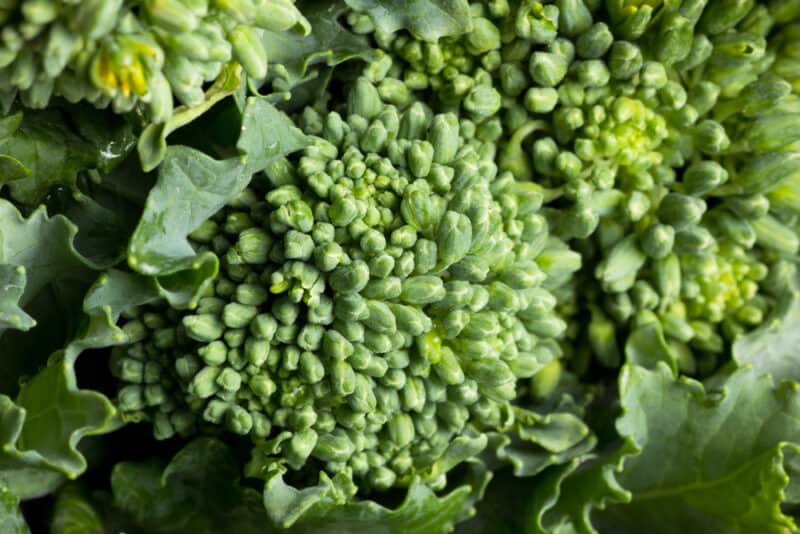
The other thing to know when selecting rapini varieties is that there is a lot of confusion between rapini, broccolini, sprouting broccoli, and turnip greens.
Turnip Greens vs. Rapini
Rapini or broccoli raab is related to turnips but has been cultivated for its flowering heads, not roots. However, there are also some varieties of rapini that are harvested for their leafy stems and not their flowering heads.
This leaf-style rapini sometimes gets confused with turnip greens. But turnip greens are biennial plants and rapini is an annual.
Broccolini vs. Rapini
Just to make things more confusing, there’s also broccolini which is a hybrid type broccoli that looks like rapini. However, it has no genetic relationship to rapini other than being a member of the same extended brassica family.
Sprouting Broccoli
Finally, there’s sprouting broccoli which is just broccoli that grows lots of small heads rather than one large one.
Seed Buying Tips
When you are looking for rapini seeds, the easiest way to make sure you are actually getting rapini and not some other broccoli type plant is to double-check the scientific name. Your seeds should be a cultivar of Brassica ruvo.
If you are ordering from companies specializing in European or Italian seeds, you may also have to search for rapini under the name “Cima di rapa”.
How to Plant Rapini
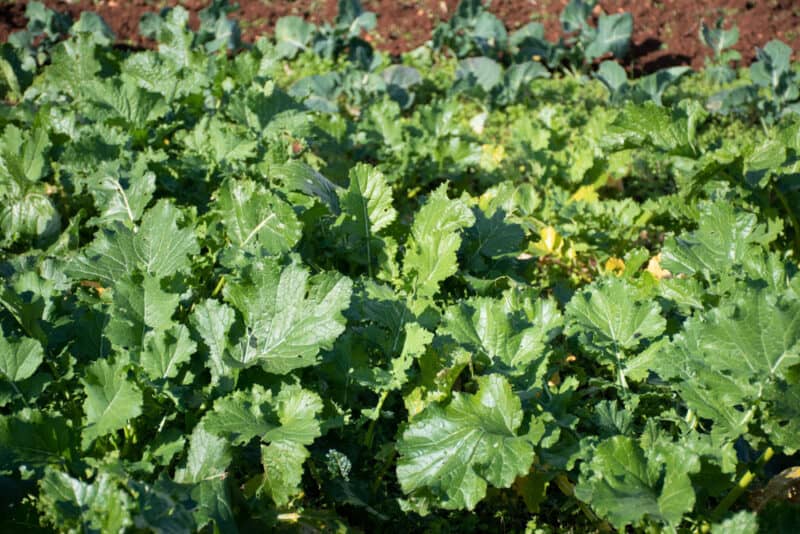
Rapini is a Mediterranean vegetable that likes cool to warm weather and low humidity (e.g. Italy and coastal parts of California). But with a little extra care, you can grow it anywhere, and even in your greenhouse.
When to Plant
Rapini can be grown from early spring to fall. But it gets more bitter in hot weather. Most people tend to grow it primarily in cool weather.
Unfortunately, rapini is not cold hardy. You’ll need to protect it from frost and extended runs of cold weather.
It’s also likely to bolt when temperatures stay above 80℉ for more than a few consecutive days. So, target planting after risk of frost when you will still have plenty of cool to moderately warm days for the variety you choose.
Starting Seeds
Rapini is best started direct from seed in the garden or in the full-size 18-24″ deep container you plan to grow it in. However, if necessary, you can start it in cells, pots, soil blocks and transplant it after risk of frost as long as you don’t disturb the roots in the process. Also, make sure to transplant or pot up before the root outgrows the original planting medium.
This plant will germinate at temperatures as low as 55℉. However, best germination rates occur between 65-75℉. Germination takes between 3-10 days depending on your conditions.
Plant seeds to a depth of 1/8th to 1/4th inch deep. You can also sow on the surface and cover with a light layer of compost.
Soil and Sun Requirements
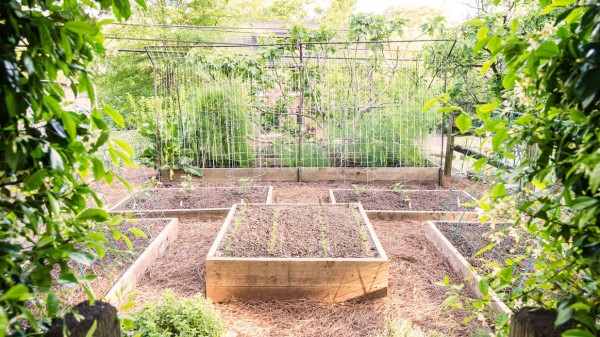
Rapini grows best in deep, fertile soil stocked with lots of organic matter. The ideal soil pH is 6.0-7.0.
They can grow in clay but will perform better if you incorporate a few inches of compost into the soil before planting. They can also do well in sandy soils with the addition of compost.
Full sun is best for fast growth. But in hot climates, a little afternoon shade might be exactly what you need to ensure a tender harvest.
Plant Spacing
Spacing for rapini varies by the number of days to harvest. Varieties that are ready in 40-60 days require about 6 inches of spacing, all-around, for each plant.
For longer maturing varieties that grow significantly larger add an extra inch for every 10 days of development. So, varieties that take 70 days, need about 7 inches, 90-day varieties, need 9 inches and so on. Although they are hard to find in the US, there are varieties that fill a square foot of space and take up to 120 days to grow.
In less fertile soils or humid climates, give each plant a little extra space to ensure good air circulation and promote faster growth.
Caring for Rapini
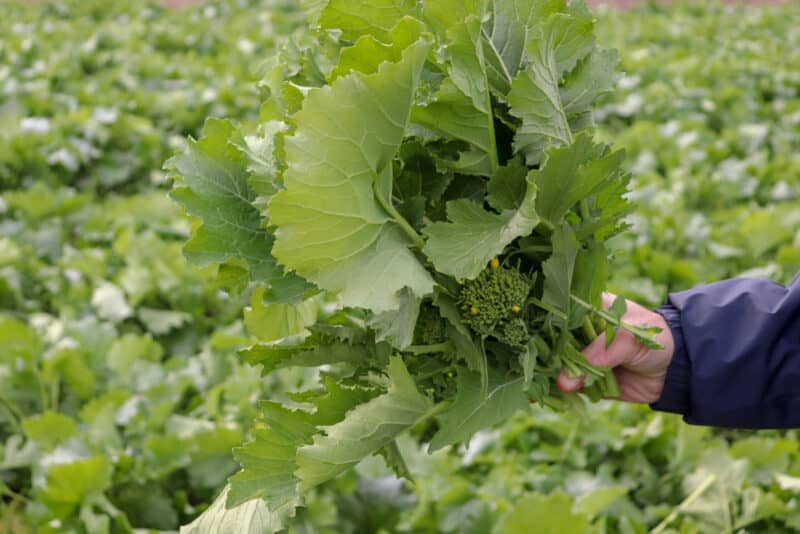
Watering
Keep these plants well-watered at all times to ensure fast development. Like it’s near cousin the turnip, once it begins growing rapidly, rapini does have some short-term drought resistance. However, these plants become even more bitter if not watered regularly.
Also, water deeply to encourage the roots to grow deeper into the soil. Deeper soil is cooler and plants that develop deeper roots stay sweeter and are less likely to bolt than shallow-rooted plants.
Fertilizer
Generally, compost is sufficient fertilizer for rapini. However, weekly applications of passive compost tea, particularly when made with vermicompost, seems to help make the leaves more resistant to insect damage.
Weeding and Mulching
As with most leafy greens, rapini doesn’t require mulching because in just a few weeks after planting its leaf mass will shade out weeds and help preserve moisture in the soil. Also, mulches like straw or grass clippings might harbor slugs and make it harder to get good leaf production from this plant.
Rather than mulching, just weed regularly until the plant begins to leaf heavily, or you can plant extra seeds and thin your seedlings for baby greens as your primary plants begin to need that space.
Companion Plants for Rapini
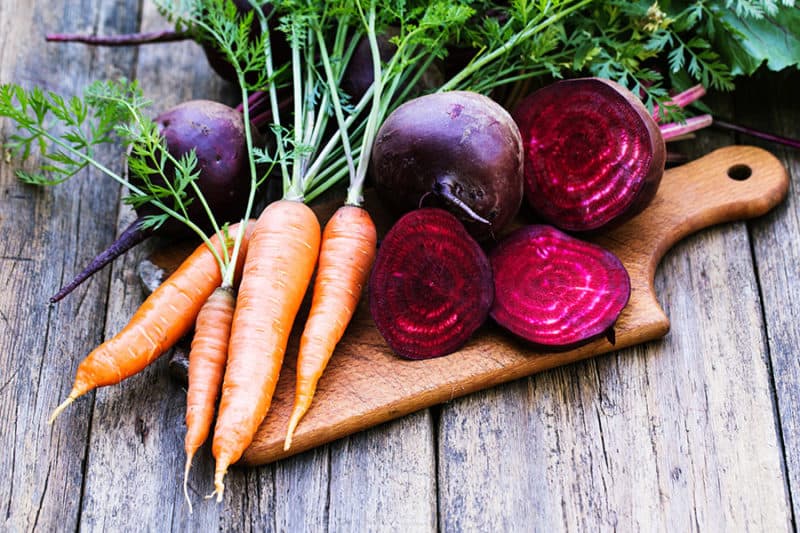
There’s not a lot of research on rapini companions in the garden. However, from my experience, I believe these are the best bets for companion planting with rapini:
Best Companions
Worst Companions
- Other brassicas like cabbage, turnips, and mustard
- Cucumbers or other members of the squash family
Common Problems and Solutions for Growing Rapini
Although I have never seen any pests or diseases on my rapini, it is theoretically subject to all the same pests and diseases as other plants in the brassicas family like cabbage.
The following problems are really only common for rapini plants grown in hot weather, poor soils, or that is not sufficiently watered.
Diseases
Alternaria Leaf Spot
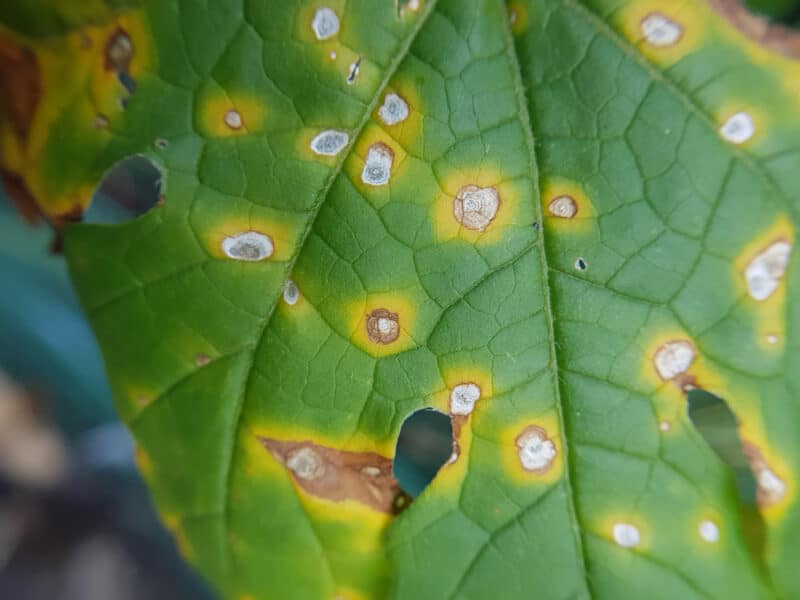
This disease can be identified by its yellow, dark brown to black circular leaf spots with target like, concentric rings. It’s most common when temperatures are between 60-80℉ with high humidity.
This disease is mainly cosmetic and isn’t usually lethal to rapini. However, removing diseased leaves, watering the soil not the leaves, and allowing for good air circulation and soil drainage can prevent transmission and slow infection rates.
Clubroot
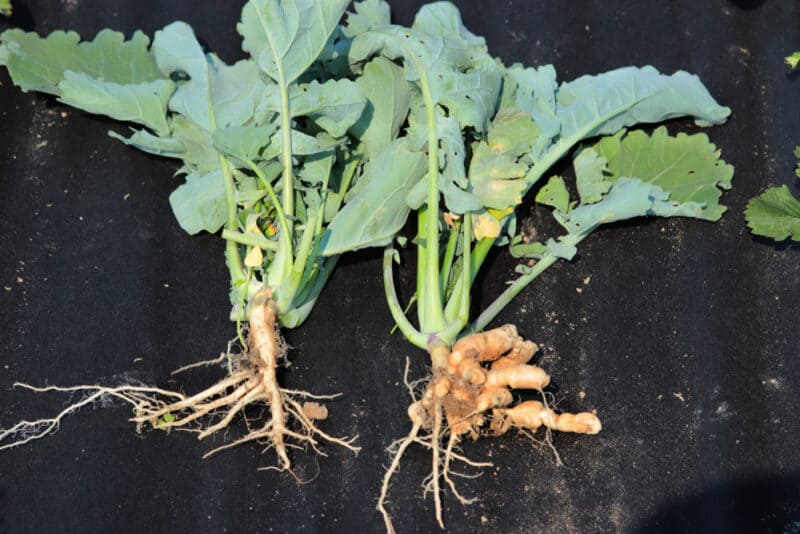
Clubroot is a soil-borne fungal disease that impacts all members of the brassica family. It manifests first as yellowing leaves. But you can easily distinguish this disease from other leaf-yellowing diseases by checking to see if they are swollen, distorted, or developing galls.
Mature plants may survive and produce leaves and flowering heads even when infected. But it’s likely a death sentence for young plants.
Using a fertilizer with calcium and magnesium, and applying boron if your soil is deficient, can reduce the risk of this disease. Note: Boron is toxic to soil if misapplied, so test your soil and apply boron only as directed based on your soil test results.
Regular crop rotation is also critical to minimizing clubroot risk in your garden.
Damping Off
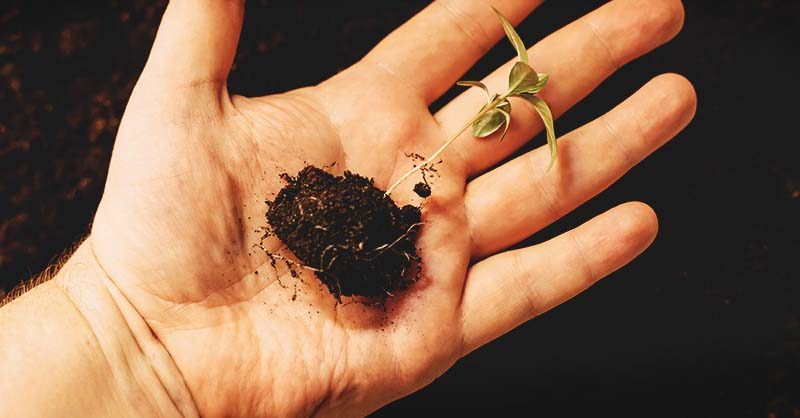
Damping off occurs in young seedlings. It’s a soil-borne fungus that thrives in humid conditions. It’s most common in plants started indoors rather than direct in the garden.
Avoid starting seedlings in humid weather. Keep soil uniformly moist and don’t allow it to become boggy.
White Rust
White rust seems to have a particular love of rapini plants. This is a disease similar to downy mildew that acts like a fungal pathogen, but is actually caused by oomycetes. This can be damaging to plants but usually isn’t lethal.
In severe cases, organic fungicides rated for use with White rust or blister rust may help you get a good crop.
Rapini Pests
Aphids
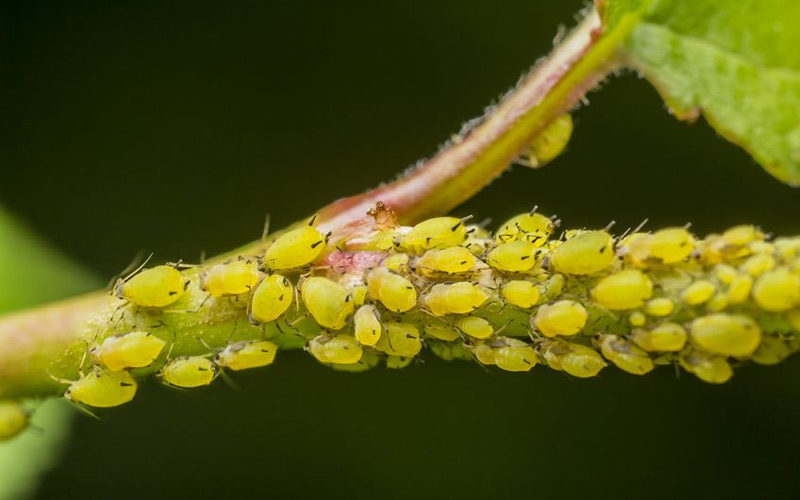
Aphids are small prolific insects that live on plant stems and leaves. They often appear in large groups on tender plant tips and young leaves. They produce honeydew (sweet insect poop) that attracts ants. Often gardeners notice the ants eating the honeydew before they see the aphids.
Aphids rarely kill rapini plants. But they can weaken an already stressed plant and make it more susceptible to other diseases. They are also known to transmit some fungal pathogens from plant to plant.
Use a soft cloth and a little soapy water to rub aphids off the leaves if you see them.
Harlequin Bugs
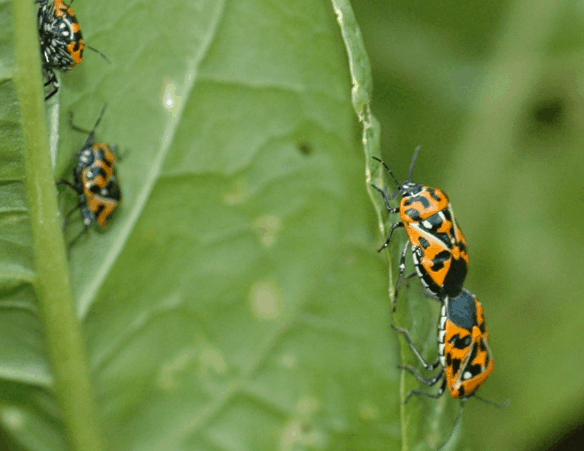
Harlequin bugs, although often mistakenly called beetles, are true “bugs”. Unlike beetles which undergo a complete metamorphosis from hatching to maturity, juvenile harlequin bugs look very much like small versions of their adult parents.
This makes them easy to recognize in their juvenile and adult form. Also, their eggs are distinctive in appearance looking a bit like the Cat in the Hat hat top. Only they are black and white instead of red and white.
These beautiful leaf suckers can ruin the appearance of your rapini plants and can cause premature death in some of the longer season rapini varieties. When you see them, squash them immediately to prevent them from breeding.
You can also plant cleome, mustard, or horseradish as a trap plant because they prefer these to rapini.
Flea Beetles
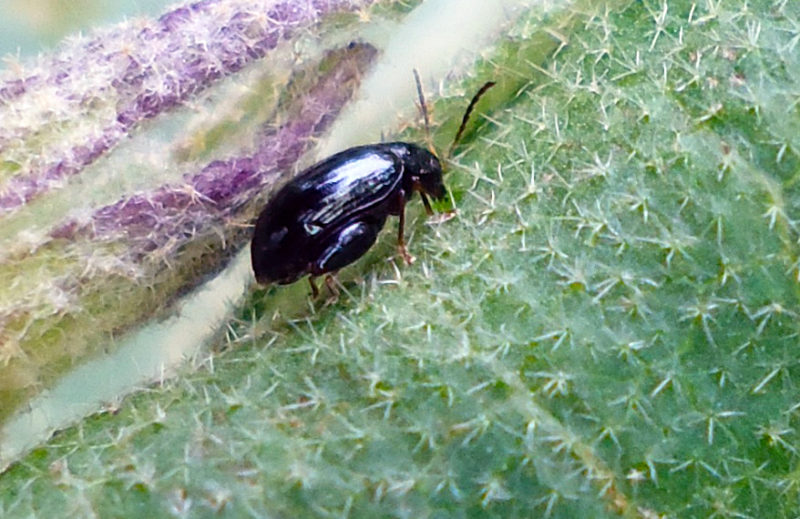
Flea beetles are another pest that cause mostly cosmetic damage to plant leaves. Floating row covers and tape traps are somewhat effective at preventing flea beetle damage.
Generally, though, since flea beetles don’t often kill or reduce the productivity of rapini plants, many gardeners just accept the small leaf holes as a normal feature of many leafy, organic vegetables.
Slugs and Snails
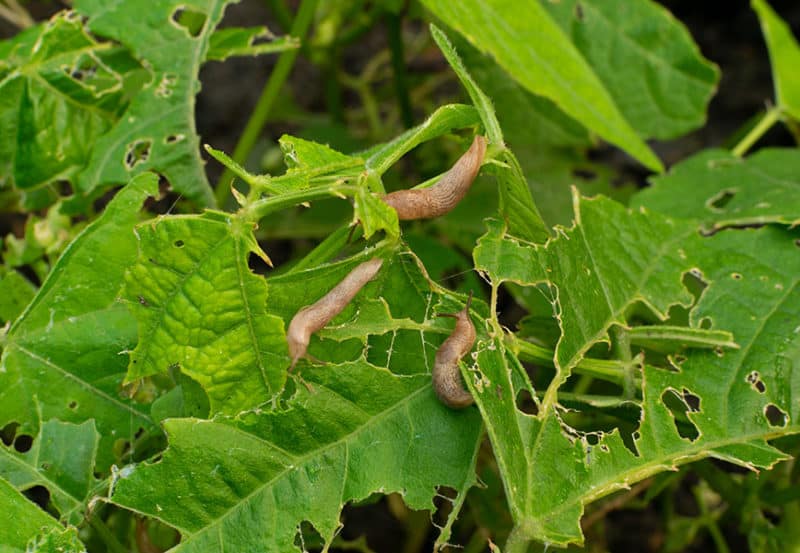
Like most brassica plants, rapini leaves are also preferred by slugs and snails. Use the normal slug and snail population control methods to keep them from doing damage.
Harvesting and Storing Rapini
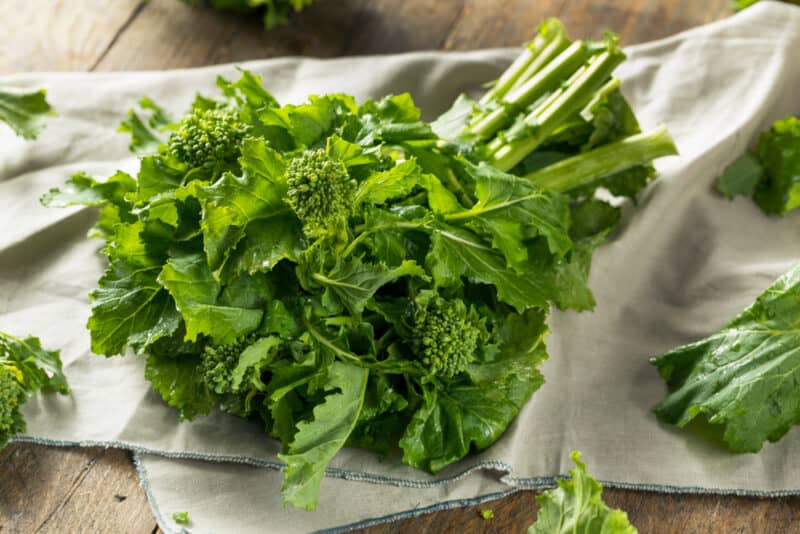
Rapini can be harvested repeatedly for its leaves similar to kale and mustard. However, most people wait for it to produce the flowering heads that look like broccoli.
To harvest those heads, you’ll want to pick them right as they form and before the flowers open for peak tenderness. Generally, plants have one large central stem and several smaller off shoots.
You can start by harvesting the main shoot down to the plant base. Then, check back daily and harvest each side stalk as it reach its peak.
Alternatively, you can harvest the whole plant at is base and eat the leaves, stocks, and flowering heads at varying stages of development when the central stem is ready.
Rapini can keep in your fridge crisper for up to a week after harvesting. However, it’s much better if you harvest and cook it the same day. You can also steam wilt your harvests and store them in the fridge for a few days or freeze them for later use.
Saving Rapini Seeds
Rapini seeds follow after the flowers. They take about 2 months from flowering to be ready to harvest.
Although rapini, like turnips is likely self-fertile, you’ll get better yields with more plants. For best results, grow six plants for seeds to allow cross-pollination.
Also, rapini may cross-pollinate with turnips. So to ensure that your plants don’t mix, keep flowering turnips at least 100 feet away from your rapini.
Rapini seeds can be stored for up to 5 years. Personally I have the best results keeping seeds for 3 years at most.
Rapini Alternatives
As much as I love rapini, I also want to share one more piece of information that might interest greens lovers. Sometimes when you find greens called “rapini” at the farmers market, they are actually just other brassicas that have bolted.
So, just in case you have a tough time growing rapini in your climate, there are a few good alternatives.
Radish, planted in hot weather, will put up flower heads instead of producing bulbs. Then you can harvest those before the flowers open similar to rapini.
If you are growing turnips for seeds, you can also harvest some of your flowering heads to eat like rapini.
Other brassica family vegetables are being cultivated for their rapini-style flower heads. Chinese flowering kale and flowering cauliflower are also cultivated similar to rapini.
Conclusion
Rapini may not be a household word yet in the U.S., but if you appreciate all those other peppery, savory, bitter Italian vegetables like radicchio and arugula, then this just might be your new favorite shoulder season crop!
Start with a 40 day variety as a test, then trade up to longer maturing, more flavorful options suitable to your climate.
